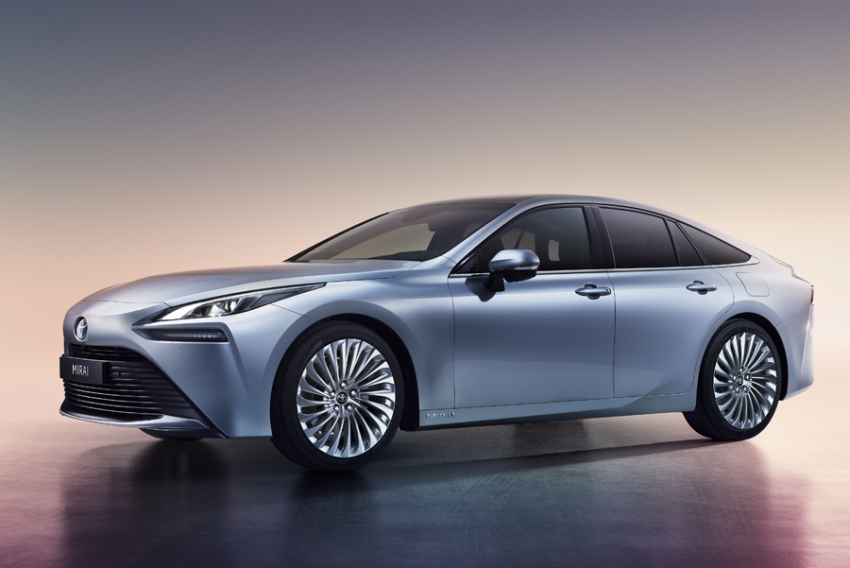A sub-zero emission engine? No, we are not talking about arctic temperatures, but the ability to be pollution-free, even purifying the air while travelling. Hydrogen (chemical symbol H) is the most widespread natural element in the universe. Yet, paradoxically, among the solutions adopted by the motor industry, hydrogen-based fuel has met very little success in the automotive market. At least for the time being. Despite decades of studies and development - Toyota began as early as 1992, although currently in use on a handful of public transport vehicles, and now ready for implementation on transportation means by road, rail and sea -, the problems connected with storage, refuelling and safe use in private vehicles, in addition to cost and energy efficiency, have in fact limited its spread. At least in Italy, where only two refuelling stations are currently active, in Venice and Bolzano. For more widespread facilities, however, we will not have to wait long, given the recent approval for 36 new refuelling stations for private vehicles, located all over Italy, including Sicily, between now and 2026.
None like it (almost)
After giving up on the distinctly futuristic lines of the first 2014 version (Mirai means 'future' in Japanese), the restyling on the 2022 model has softened the design more in line with contemporary tastes and could, for all intents and purposes, be considered almost a traditional car. An unrivalled flagship, the Mirai was the first, and currently one of only two cars in our country to use the hydrogen fuel cell system to recharge its batteries. On board the feeling is that of driving a great roadster, with the kind of dimensions one would expect from an E-segment saloon, with 4.975 m length, 1.885 m width and 1.48 m height, a wide track, over 1.6 m and a generous 2.92 metre wheelbase. An imposing presence somehow diluted by a sloping and aerodynamic coupé-style design, with a tapered front that features Bi-Led technology and adaptive high beams, dominated by a grille designed to cool not an ICE engine, but the fuel cell unit. Muscular sides, wide wheel arches, quite appropriate given the 19- and 20-inch alloy wheels, make up a harmonious design all the way to the rear section, with a steeply sloping rear window emphasised by the slender, continuous headlamps running almost the full width. The top of the range boast a panoramic roof that supplies an additional feeling of space and connection with the outside world.
Plain and elegant, the interior finishes reflect Japan-style comfort and quality, with leather or fabric upholstery and adequate space even for five passengers, thanks to technological solutions aimed at reducing the volume of certain mechanical parts in favour of the internal room. One example is the fuel cell unit, moved, compared to the previous version of the Mirai, from under the floor to the front compartment, thus freeing up space and optimising the weight balance, which is now perfectly symmetrical. Right in the middle of the all-digital dashboard, with 8-inch instrument display, we find a large 12.3-inch touchscreen, supported by a colour head-up display capable of projecting all driving information, navigator indications, traffic sign repetition and lane position monitoring on the windscreen, automatically maintained by the Adas Lane Trace Assist system. Just below that are the tri-zone climate control settings and the button for engaging the (automatic) parking brake, along with the forward and reverse start. The Intelligent Park Assist has been entrusted with making parking easier even in tight spaces, plus a full complement of dynamic traction, stability and braking controls.
The presence of eight airbags, along with the programmed deformation zones and all the safety systems, including 2nd generation Toyota Safety Sense, earned the Mirai the highest standards, confirmed by the 5-star Euro-NCAP test rating.
Aerosol-proof
Built on Toyota's GA-L platform (TNGA-L, or Toyota New Global Platform for Luxury vehicles), the same adopted for example on the Lexus LS and Toyota Crown flagships, the Mirai has an architecture aimed at flexibility, in this case capable of accommodating a power unit completely different from traditional ones. Under the floor-pan we find three (previously two) high-pressure, 700 bar hydrogen tanks, totalling 142 litres, 5.6 kg equivalent, while the permanent magnet synchronous power unit is located directly on the rear axle, capable of developing 182 bhp of power and 300 Nm of torque, powered by an 84-cell lithium-ion battery pack, 310 Volt and 4 Ah capacity. The principle of the FCEV (Fuel Cell Electric Vehicle) hybrid propulsion is simple: instead of recharging through public charging stations, the batteries are maintained efficient by the hydrogen fuel cell converter FCPC (Fuel Cell Power Converter). A generator with reverse electrolysis operation, i.e. capable of producing electricity through the combination of hydrogen (fuel) and oxygen (oxidizer), triggering a chemical reaction that produces energy, heat and water, the latter of which is then expelled from the exhaust in the form of steam. In the intake phase, then, a series of filters trap most of the impurities, capturing particles of pollutants such as sulphur dioxide, nitrogen oxide and PM 2.5 particulates, effectively cleaning the air before it enters the Fuel Cell system, removing 90 to 100 per cent of the 0-to-2.5-micron particles. In terms of suspensions, compared to the earlier Mirai, this edition features a front end with a multilink independent-wheel system (as well as the rear axle), instead of the traditional McPherson layout, providing precise ground support with improved stability and comfort. Given its weight and ultimate function, driving the Mirai does not feel like racing a GT, although appreciable speed performance and a perfectly balanced 50:50 weight distribution guarantee handling and a dynamic driving style. Top speed settles at 175 km/h, with a 0-100 km/h acceleration of 9.2 seconds, and a range - estimated - in the region of 650 km, 30% more than its predecessor, after which the hydrogen tanks will have to be refilled, an operation that takes about five minutes. It is therefore possible that in the near future, a not so rare Toyota Mirai may turn up in the workshop for the replacement or seasonal change of the tyres: in this case the only two sizes allowed are 235/55 R19, present on the Pure and Essence versions, or 245/45 R20, standard on the richer Essence+.


